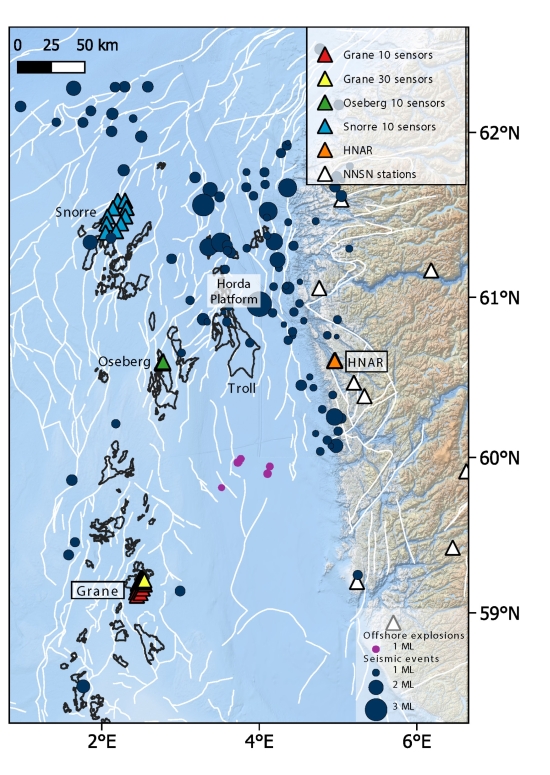The PhD defence and trial lecture will be held in Auditorium 1 in The Geology Building. In some cases, it will be possible to attend the trial lecture and dissertation digitally, in that case a link to Zoom will be posted.
Trial lecture
Wednesday 8 May, 10:15-11:00, Aud 1, The Geology Building:
Geothermal energy exploitation and seismicity
Conferral summary (in Norwegian)
Nordsjøen utgjør et kritisk område for olje- og gassvirksomhet, og forventes å spille en viktig rolle i fremtidens storskala CO2-lagring. Denne avhandlingen tar for seg en grundig analyse av jordskjelvaktivitet i Nordsjøen. Å forstå disse seismiske hendelsene er avgjørende for å identifisere potensielle risikoer forbundet med industriell virksomhet, og for å skille mellom naturlig forekommende og menneskeskapte jordskjelv. Avhandlingen gir innsikt i analytiske utfordringer, foreslår metodiske forbedringer, og forsterker vår forståelse av tektoniske prosesser i Nordsjøens skorpe.
Main research findings
Popular scientific article about Jerkins’s dissertation:
Improved Understanding of Seismicity in the North Sea
The North Sea basin plays a crucial role in oil and gas exploration and has the potential to become an essential site for CO2 storage in the future. Seismic activity in the region typically ranges from low to intermediate. Nevertheless, it has experienced several notable earthquakes, including a significant event with a moment magnitude of 5.1 on 21 March 2022. Grasping the nature of these seismic events is vital for assessing the hazards and risks associated with offshore infrastructure. It also aids in differentiating between natural seismic activities and those induced by industrial operations.

This thesis tackles the limitations of the current seismic monitoring network in the North Sea and the reliance on oversimplified models, which often lead to inaccurate earthquake locations. By integrating permanent reservoir monitoring systems at oil and gas fields, such as Grane, Oseberg, and Snorre, we have significantly improved the detection and locations of seismic events. An in-depth study of the March 21, 2022 earthquake has provided deeper insights into the tectonic behaviour of the North Sea's lower crust. We also comprehensively review the area's seismic activity, addressing limitations and suggesting future improvements in seismic monitoring of the earthquake activity in the basin.
Photo and other information:
Press photo: Annie Elisabeth Jerkins, portrait; 1000px. Photo: Private
Other photo material: Figure with description and credit as specified in the article above, size 1750px.
